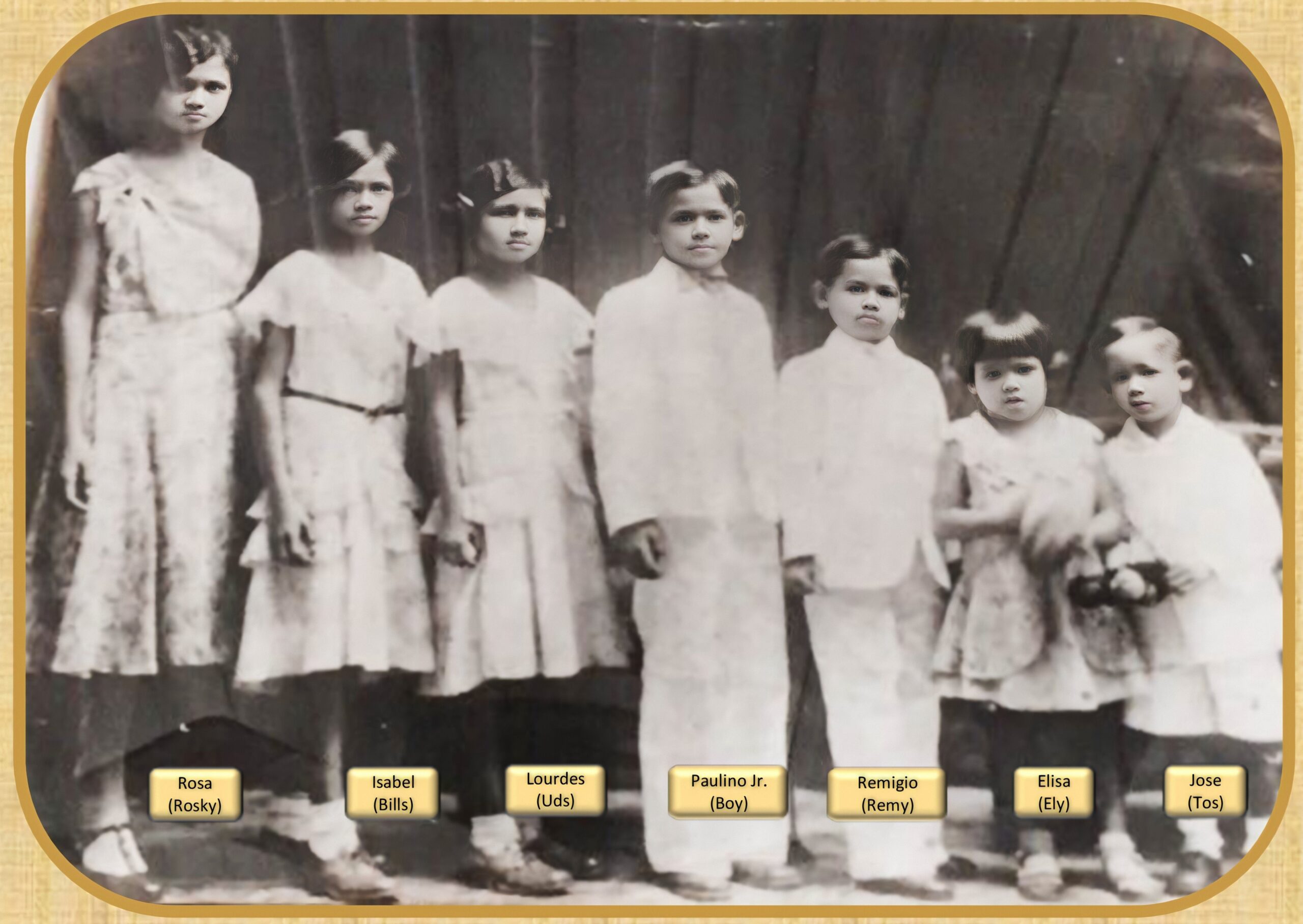GENERAL SANTOS ARCHIVE
BIOGRAPHY

MARRIAGE PROPOSAL TO ELISA ANGELES
- His wounds gave him a reason to ask for his accrued leave.
On 1918 January 1, he went post haste to Bulacan, Bulacan
to marry his sweetheart of four years, the former Elisa
Angeles. - They were married by January 22nd.
- He had hardly spent one half of his accrued leave when an
urgent telegraph instruction ordered him back to duty in
Lanao to relieve Lt. J. T. Polk as station commander and
deputy governor of the District of Tamparan, Lanao, Then,
considered the worst district in Lanao from the standpoint of
law and order.
- 1918 April 18, he became the first Filipino officer to
command this turbulent district where men like the late
Governor General Leonard Wood and Col. A.S. Fletcher of the
US Army almost lost their lives. - While in Tamparan, he was commissioned as Captain,
jumping over 36 senior ranking first lieutenants. - 1919 March, Capt. Santos was transferred to the Province of
Sulu to become the first Filipino officer ever to be assigned to
the command of this historic archipelago. - In addition to his duties as provincial commander, he was also
appointed justice of the peace-at-large and deputy governor at-large while Capt. Santos was in Sulu, an uprising took place on the Island of Basilan, Zamboanga that necessitated Army - participation. Capt. Santos received telegraphic instructions
to proceed to Basilan with two Constabulary companies and
six officers.


- He immediately relieved Lt. Col. A. S. Fletcher, US
Army, as commanding officer of the campaign, to the latter’s
great disappointment.
• In two weeks, the new commander had placed the situation
under control. The leaders of the uprising were either captured
or killed.
• In August 1920, Santos was ordered back to the province of
Lanao to become the first Filipino provincial commander and
concurrent provincial governor, relieving Major M. L. Stephens
who unexpectedly retired. - 1922 – The late Governor General Francis Burton Harrison of
the Philippines, in his book entitled, The Cornerstone of
Philippine Independence – a narrative of seven (7) years of
Lanao province wrote: “The most dangerous district of the
Muslim regions today, potentially, is Lanao, where the vast
regions of the interior offer an easy avenue of escape to
disturbers of the peace. The Datus of that region are proud
and may at any moment become turbulent.
- The present Governor of Lanao, Captain Santos, a young Filipino
Constabulary officer, is cool, intrepid, tactful and vigilant. No
better man could be found for that position.” (The Century Co.,
New York, 1922). - Due to differences with General Wood, then governor general
of the Philippine Islands, over conflicting policies affecting
relations between Christians and Muslim Filipinos, Capt.
Santos resigned as provincial governor of Lanao. - His outstanding accomplishment in the province of Lanao was
in the field of PUBLIC INSTRUCTION. He established more and
better Muslim schools and the increase of school attendance.


- Communication was established between Muslim
settlements without additional expense to the government.
Agriculture was improved making it possible for the province
not only to produce its rice and corn requirements but also to
export these staples to other provinces.
• His efforts to establish Christian barrios in the northern
portions of the province were quite successful, thus inducing
home-seekers from Bicol and Cebu to settle in Lanao.
• He considered the work done in the promotion of harmonious
relations between Christians and non-Christian inhabitants in
Lanao and Sulu was one of the highlights of his career as a
public servant,
Due to his knowledge of the various dialects spoken in
Mindanao and Sulu, he was able to harmonize the Christians
and non-Christian elements, He gained the confidence of
every Chief and Datu he came in contact with.
• In 1923 he became a Major, and relieved of his duties in
Lanao. He was assigned district inspector for Southern Luzon.
He occupied the position of adjutant of the constabulary from
March 1924,
• His greatest contributions to the organization was the
amendment to the pension and foggy laws affecting the force
and personnel, collaborating in this work with the then Chief
of Constabulary, Brig. Gen. Charles E. Nathorst.
• 1930 October 16 – Promoted to Lieutenant Colonel and
Assistant Chief of the Constabulary, he was concurrently
assigned Assistant District Commander of Southern Luzon.